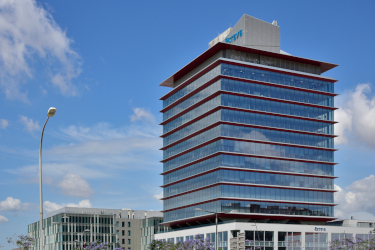08/02/2016
THE COSTS OF CHRONIC PAIN (3% OF GDP) MAKE IT A MAJOR PUBLIC HEALTH CONCERN
Forty-five percent of patients suffer from neuropathic pain. This pain accounts for 20% to 30% of the painful conditions managed daily at medical consultations, and is one of the most difficult-to-treat types of pain.
Rehabilitation physicians play a key role in the multidisciplinary and interventional approach needed by patients with neuropathic pain.
Neuropathic pain persists over a year in more than 65% of patients and significantly affects their personal, family, social and work life.
Neuropathic pain is still one of the most difficult to diagnose, most refractory and most complex to treat types of pain. It affects 45% of patients in pain and has an enormous impact on their personal, family, social and work life. Specialists define it as a multifactorial disease requiring a multidisciplinary approach, including pharmacology and psychology, and where the rehabilitation physician's role is key. More than 200 professionals attended the National Refresher Course for PM&R physicians organized by ESTEVE and endorsed by the Spanish Society of Physical & Rehabilitation Medicine.
Chronic pain is one of the major public health concerns on account of its direct and indirect costs (between 2.5% and 3% of GDP) and enormous impact on the patient's life. Neuropathic pain is one of the most complex forms of chronic pain, results from a lesion or malfunction of the central and/or peripheral nervous system, is typically of a continuing, burning and shooting nature, and is sometimes defined as stinging by patients.
It currently accounts for 20% to 30% of the painful conditions managed daily at medical consultations and "affects some 2 million people at an average age of 57, more so in women (10% to 15%)", explained Dr. Angel Rubio, scientific coordinator of the National Refresher Course for PM&R Physicians. "It is a type of chronic pain and approximately 24% of patients require hospitalization. Also, the longer the suffering, the more complex the control".
Publications evidence the huge clinical, healthcare and occupational impact of neuropathic pain on the Spanish population. According to the Spanish Society of Neurology, neuropathic pain symptoms last over 12 months in more than 65% of patients, with 85% enduring a significantly impaired quality of life.
"Despite pharmacological progress over the past few years, neuropathic pain is still a major cause of distress in chronic pain patients. While many times it cannot be totally eliminated, it can be controlled. This is where the rehabilitation physician plays a key role. Indeed, one of the phases of the treatment of neuropathic pain corresponds exclusively to rehabilitation", Dr. Rubio stated.
According to the Neuropain Survey, the two major clinical pictures associated with neuropathic pain are radiculopathy (27%) and cancer (17%). "The oncological origin is more frequent than one might have expected, and may be due to compression caused by the tumor in 70% of cases. It also results from chemotherapy, radiotherapy and surgery in another 25% of the situations, and is also found in patients with a history of herpes zoster or in diabetic patients".
Rehabilitation is key for a multidisciplinary approach
Recognizing the clinical manifestations and the possible origin of neuropathic pain, as well as appropriate early treatment, may help limit its impact on the patient's life. According to experts, it is a multifactorial disease that must involve a comprehensive therapeutic plan and a multidisciplinary approach, with multidimensional, customized interventions agreed with the patient to reduce the severity of pain with pharmacology, psychology and rehabilitation. "Therapy must be of a premature, stepwise, multidisciplinary, prolonged, aggressive nature. It must also combine pharmacological and non-pharmacological treatments, including neurosurgical techniques", Dr. Rubio stated.
This is where rehabilitation physicians play a key role. They receive patients referred by Primary Care or Orthopedic Surgery, and practically all neuropathic pains are approached by rehabilitation physicians throughout their evolution. According to Dr. Rubio, "one of the steps in the treatment of neuropathic pain is exclusively assigned to rehabilitation treatment, which includes broad and diverse interventional techniques".
Pain Units are essential to improve the quality of life of patients with neuropathic pain. "There should be a pain unit in each of the 890 hospitals currently operating in Spain. The reality, however, is that there are only 188, and that they don't even exist in some provinces. This is an insufficient number -only 60% of Spanish hospitals have this type of unit among their services".
Back pain, second only to headache
It is estimated that between 70% and 85% of the adult population has back pain sometimes in their life, this being the second leading cause of medical visits due to chronic pain -only surpassed by headache- with more than 2 million primary care consultations.
In 80% of cases, back pain affects the lower back, frequently with an associated neuropathic component that notably hinders treatment. One third of patients suffer from very severe pain, 15% are bedridden and another 22% cannot work due to lumbago.
Physical inactivity is an important chronification factor. That is why the Back Workshops were created to teach "care and protective mechanisms of the body, so that people with low back pain can rapidly resume their normal activities and prevent future lesions", Dr. Rubio explained. "The goal is to prevent back pain, demystify it and learn about self-management and adaptation to symptoms. This is about different strategies being used to help patients live and understand their discomfort more objectively, and also learn how to face the situations and the problems of daily life".
You can follow ESTEVE on Twitter at this link: twitter.com/esteve_news.



